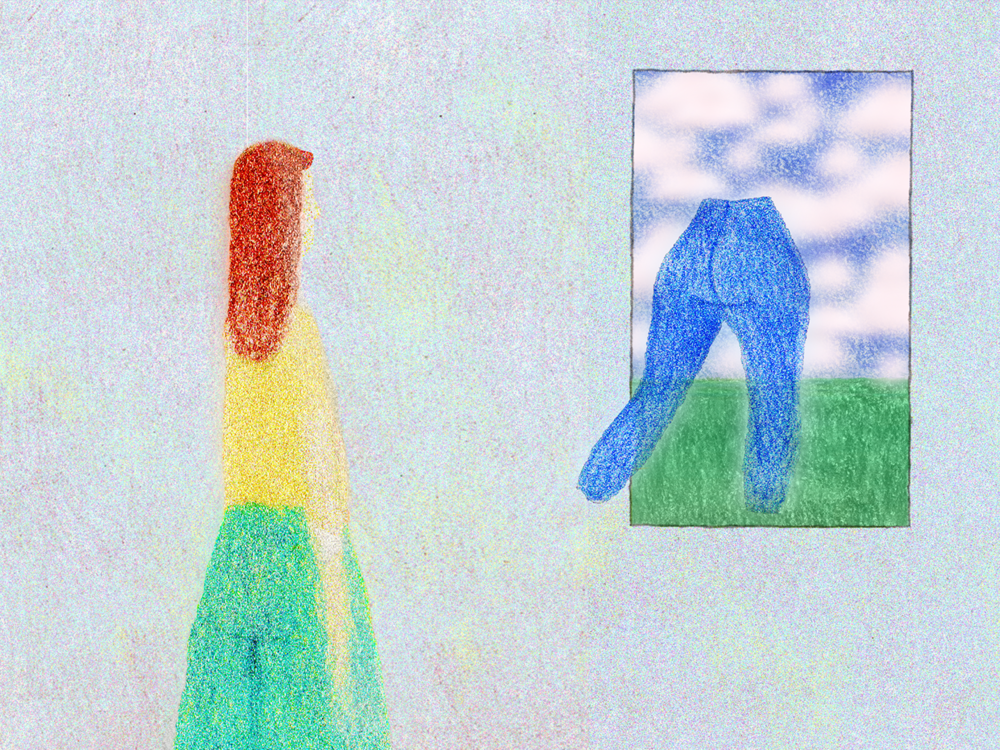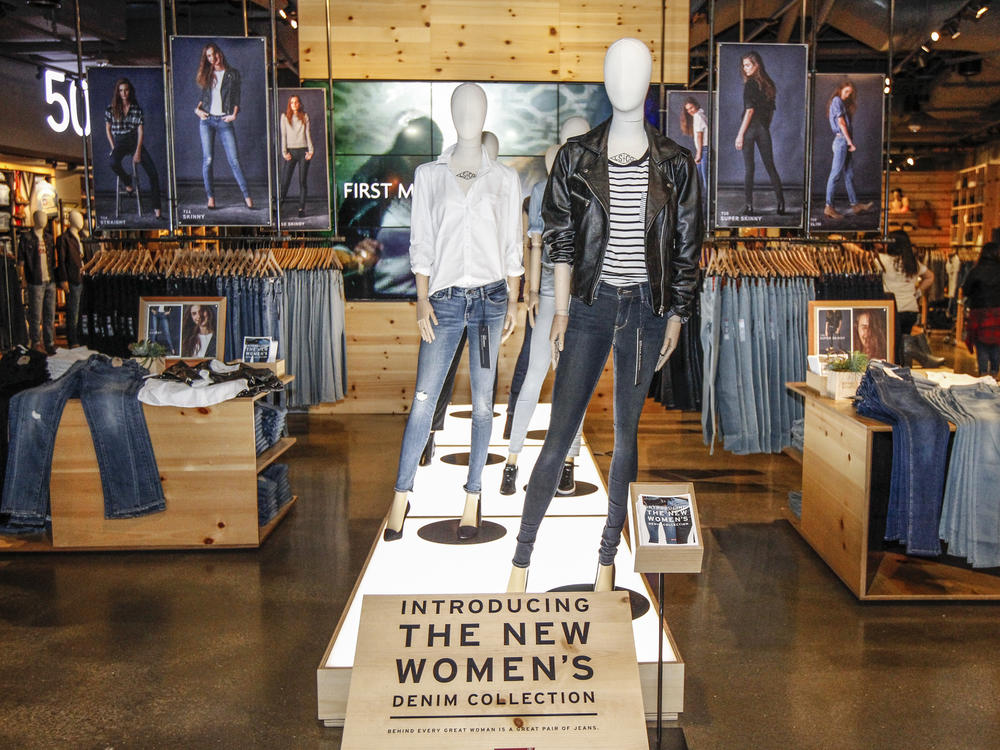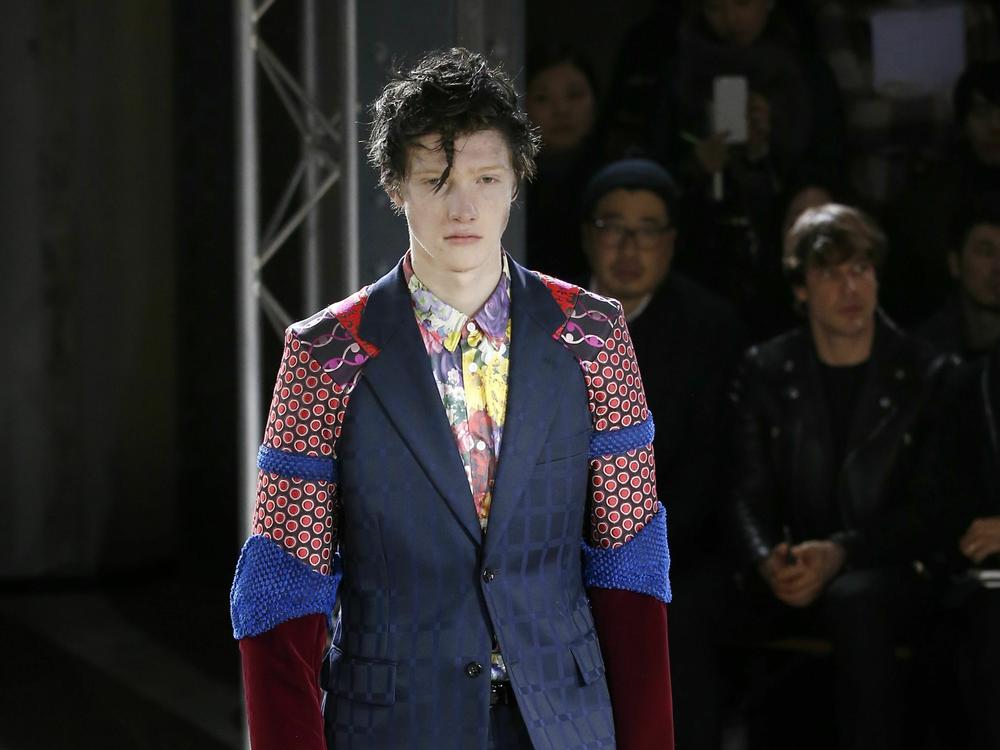Section Branding
Header Content
So long, skinny jeans. See you in the next cycle
Primary Content
When Moe Black was a teenager, you could wear only one style of pants.
"If you wore anything besides skinny jeans, you were, like, weird," said Black, now a 29-year-old fashion content creator. At the time, skinny jeans had fashion and pop culture in a stretch-denim chokehold.
Black recalled taking style cues from the stars she saw on MTV and VH1, telling NPR she looked to bands like Green Day.
"A lot of these bands were anti-government, anti-war," she said. "And I felt like the way that they dressed was such a symbol of what they believed."
Her uniform: dyed hair in a side part, oversize graphic tee, checkerboard Vans and jeans so tight they looked painted on. But as ubiquitous as they once were, skinny jeans are out. And looser, 1990s-inspired styles are in.
So, what happened?
It's not just pants that come and go. Everything from shoes to color palettes to entire aesthetics cycle in and out of style. And keeping up with it all can feel dizzying. But there is some logic to how it all works.
The life and death of a trend
The life of a trend starts with a trendsetter.
"It's traditionally started with designers and the people that are making the clothes for us to purchase," said Ashlyn Greer, CEO and founder of Fashivly, a personal styling company.
In the first year of the trend life cycle, a new style is invented — that could be by subcultures in music or art or by fashion designers experimenting with new shapes or drawing from the archives.
Take grunge, for example. In 1992, fashion designer Marc Jacobs released a collection for Perry Ellis paying homage to the alternative rock movement of the Pacific Northwest.
That collection put the style's slouchy silhouettes and plaid flannels on the fashion map, Greer said.
"And then now all of a sudden, there's a Vogue editorial about grunge dressing," she said. "And now all these other people in mainstream culture start to adopt that."
Media and early adopters of a trend — like celebrities, influencers or your fashionable friend — spread the trend to the masses. At this point, retailers scramble to produce the clothes consumers want.
Then, once enough people catch on to the trend, it's not cool anymore.
Until the trend repeats, and what's old feels new again.
Fashion imitates life
"Novelty is both the essence of fashion and its economic engine," said fashion historian and journalist Kimberly Chrisman-Campbell. "It's what keeps us buying clothes even when we have more clothes than we need."
Yet novelty isn't enough to explain what goes in and out of style, Chrisman-Campbell said. She theorizes the trends that catch on resonate in a deeper way.
"I think there has to be a different emotional, or economic, or perhaps just social factor there beyond 'it looks good' or 'I want to be like X person in the media,'" she said.
Jesica Wagstaff is a fashion content creator and writes A Sunday Journal, a newsletter about fashion theory. She points to the quiet luxury trend as an example of how socioeconomic conditions influence what people want to wear.
Google searches for "quiet luxury" — the trend characterized by luxurious knits and high-quality, minimalist pieces — hit a peak in the spring of 2023. This was around the time that HBO dropped the fourth season of Succession and the internet was obsessed with decoding the wealthy aesthetics of the Roy family.
"And so we started to see people have quiet luxury hauls from fast-fashion brands in order to emulate the overall style that we saw from people who were shopping at incredibly expensive stores," Wagstaff said.
Wagstaff thinks that this trend spoke to consumers because it signaled wealth and success at a time when people were feeling the economic impact of the COVID-19 pandemic.
Putting it all together
If you take all these factors into account — the life cycle of a trend, consumer psychology and the socioeconomic conditions of the day — you can begin to explain the big-pant revival.
According to Fashivly's Greer, skinny jeans hit peak popularity sometime in the 2010s, meaning the time was ripe for something new. And that's exactly what was happening on runways. Greer points to loosening silhouettes in collections from the likes of Marc Jacobs, Comme des Garçons and others around 2016.
Then, Chrisman-Campbell theorizes, as the reign of skinny jeans came to an end, pandemic lockdowns accelerated the spread of wide pants. People stuck at home opted for comfort.
Of course, this is a tidy story, and Chrisman-Campbell points out that making sense of trends isn't an exact science. But whether you're watching runway shows from your laptop or don't care about clothes much at all, it matters.
"Dress is a form of communication, and I think we neglect it at our peril because we are communicating to other people whether we mean to or not," said Chrisman-Campbell.
And understanding that communication is essential, said Wagstaff.
"Then we can give ourselves a little bit more peace, grace and just flexibility to present ourselves in a more authentic way," she said.




